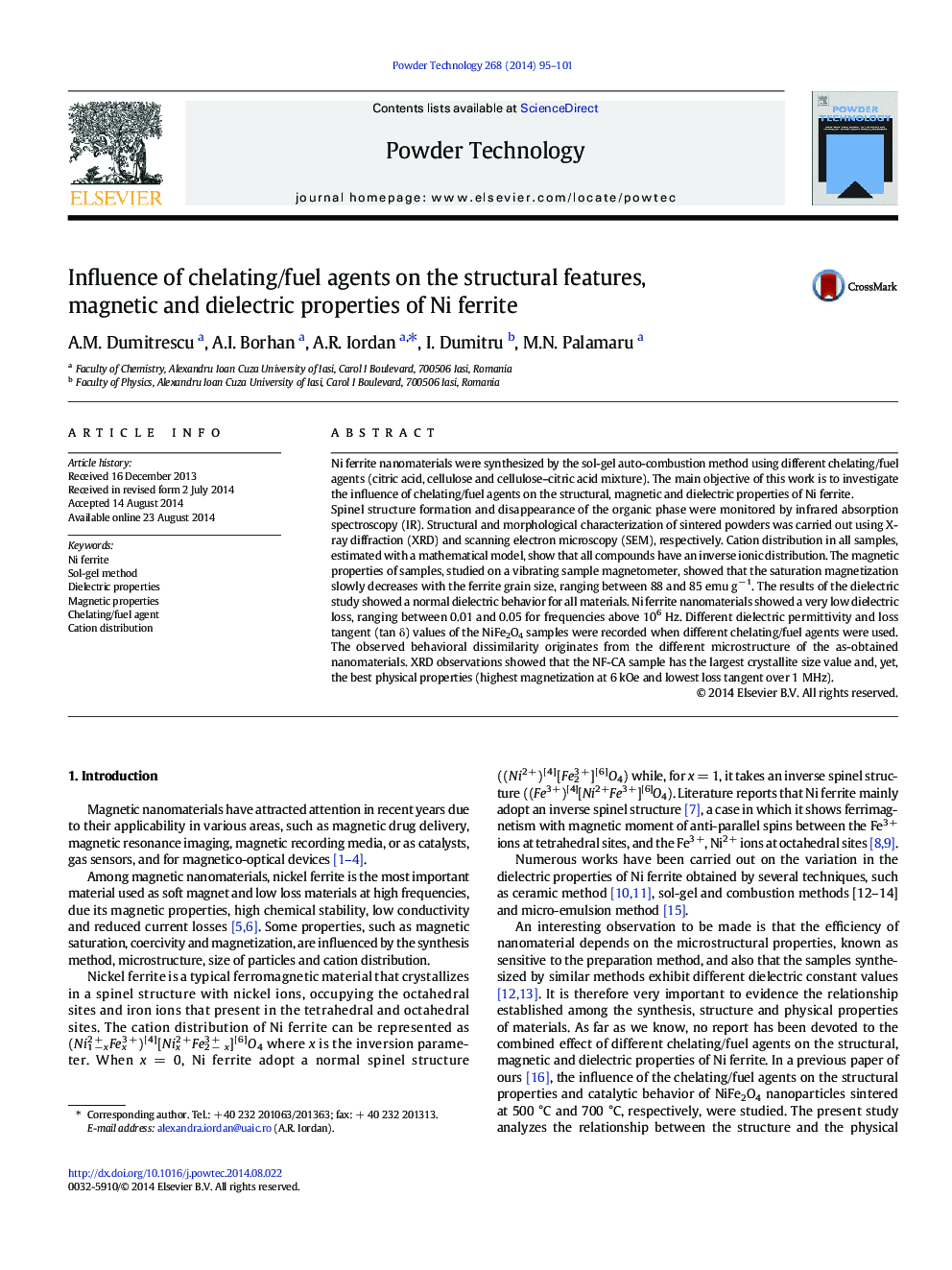| Article ID | Journal | Published Year | Pages | File Type |
|---|---|---|---|---|
| 235938 | Powder Technology | 2014 | 7 Pages |
•Nickel ferrite was obtained by sol-gel autocombustion method.•Different chelating/fuel agents were used for the synthesis of nickel ferrite.•Dielectric and magnetic properties for samples synthesized are studied.•Relation structure/properties are studied for samples thermally treated at 900 °C.
Ni ferrite nanomaterials were synthesized by the sol-gel auto-combustion method using different chelating/fuel agents (citric acid, cellulose and cellulose–citric acid mixture). The main objective of this work is to investigate the influence of chelating/fuel agents on the structural, magnetic and dielectric properties of Ni ferrite.Spinel structure formation and disappearance of the organic phase were monitored by infrared absorption spectroscopy (IR). Structural and morphological characterization of sintered powders was carried out using X-ray diffraction (XRD) and scanning electron microscopy (SEM), respectively. Cation distribution in all samples, estimated with a mathematical model, show that all compounds have an inverse ionic distribution. The magnetic properties of samples, studied on a vibrating sample magnetometer, showed that the saturation magnetization slowly decreases with the ferrite grain size, ranging between 88 and 85 emu g− 1. The results of the dielectric study showed a normal dielectric behavior for all materials. Ni ferrite nanomaterials showed a very low dielectric loss, ranging between 0.01 and 0.05 for frequencies above 106 Hz. Different dielectric permittivity and loss tangent (tan δ) values of the NiFe2O4 samples were recorded when different chelating/fuel agents were used. The observed behavioral dissimilarity originates from the different microstructure of the as-obtained nanomaterials. XRD observations showed that the NF-CA sample has the largest crystallite size value and, yet, the best physical properties (highest magnetization at 6 kOe and lowest loss tangent over 1 MHz).
Graphical abstractFigure optionsDownload full-size imageDownload as PowerPoint slide
